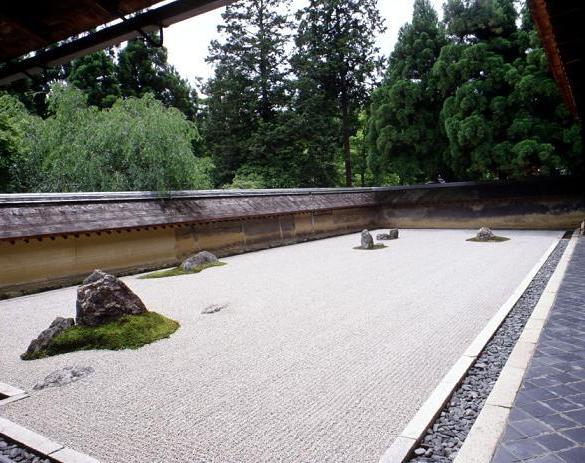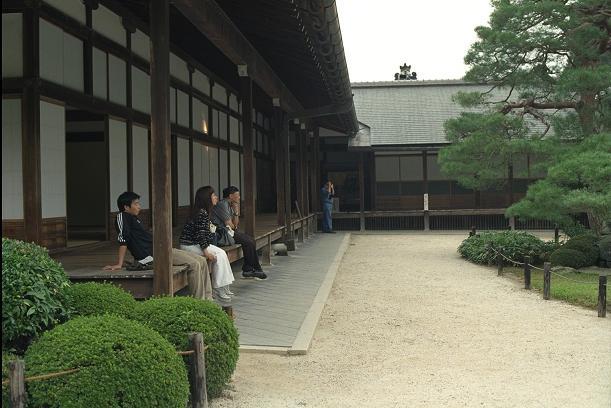Zen gardens
Zen garden is a kind of traditional Japanese garden art with strict rules.
Zen gardens are famous for there serene atmosphere. They don't have the intention to create
a romantic feeling or to be admired for its beauty. Nor are they replica's of something.
The intention is to create a feeling of emptiness. In that way zen gardens facilitate meditation.
This is the reason that those gardens are fully integrated in Zen cloisters.
Its very hard to create a zengarden in our western world. But a temporary Zengarden can easely
be created in the wood or on the beach.
rules for Zen gardening
- Self-reference
Only really natural materials are used to create the objects in those gardens
Sand points to see, rocks points to mountains or islands. Of course those rocks
are not a small replica of island. Lanterns or bridges are not part of a zen garden,
but in Japanese gardens they are abundant.
- Silence and emptiness
No human sound is heard, no car, no light of street lanterns and so on.
Only some rocks or other natural objects are placed as meditation objects.
- asymmetry en simplicity
These rocky or wooden objects are placed as asymmetric as possible.
No symetrical constructions can be seen, no wires ,no pipes.
- Intuition and chance
intuition is used for collecting and placing the
objects in the garden.
- Only natural materials
use only natural materials, so no lamps, waterpumps etc.

The Zen garden of the Kinkakuji temple, Kyoto
Problems
By far the biggest problem is the creation of a silent garden.
Cars and machines destroy the silence, and tourists are worse then cars
For this reason these gardens are surrounded by walls
of natural materials like wood.
The seize of garden needs to be huge, so creating a feeling of emptiness.
No other human activity's other as meditation should happen in those gardens.
Muso Kukushi of Muso Soseki
This Budhistische priest is the founder of the zengardens. Born in 1275, he lived most of his live around Kyoto, until he died in 1351. He practised Bhudism form a early his 6 year, and had during his lifetime about 1300 pupils. He transformed the Japanese garden into the Zen garden, his most important work is the Tenryuji garden in Kyoto:

Tourist whatching the dry Zen garden
The Tenryuji temple
The Tenryu-ji Tempel (heavenly dragon temple) in Kyoto. This temple
complex is famous for its pure white buildings and very old
Zen gardens. The main building has been destroyed by fire 6 times, but
has been rebuild exactly in the same way.
Tenryu-ji Temple or heavenly dragon temple.
